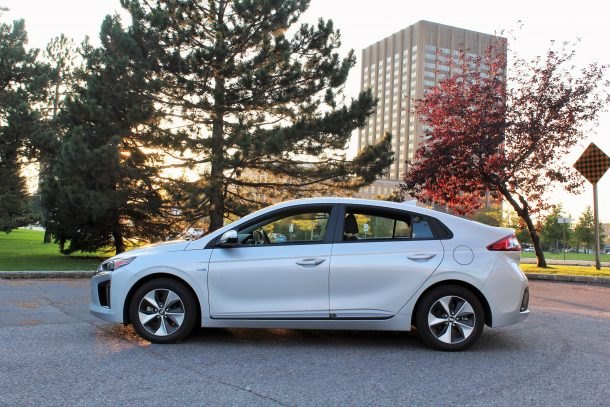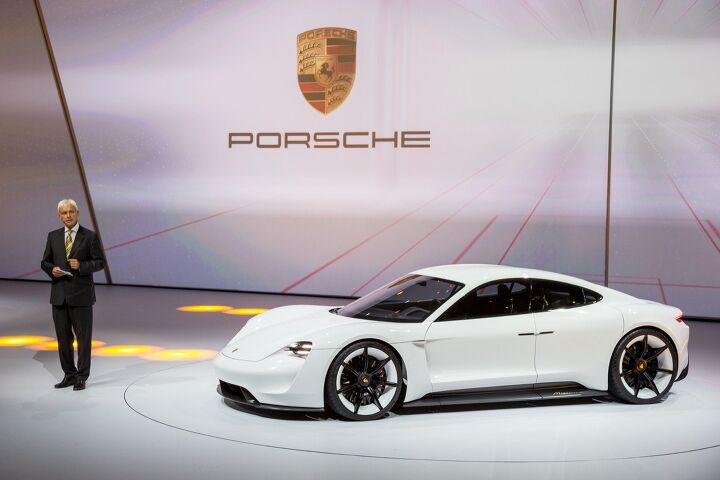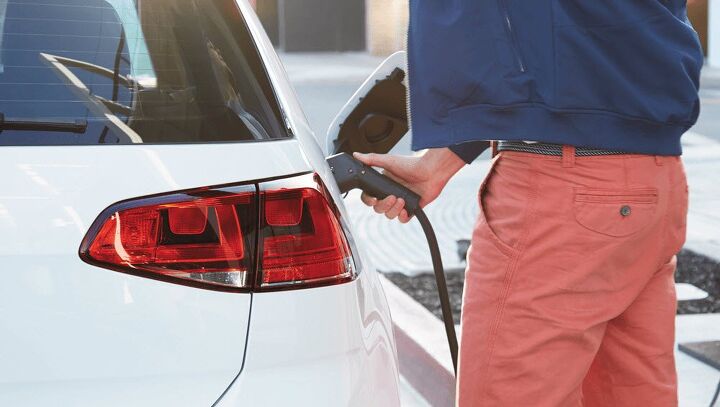#Plug-inHybrids
2018 Mitsubishi Outlander PHEV Review - The Waiting Was the Hardest Part
The idea was as obvious as it was brilliant. Take the hottest segment of motor vehicles on the market and stick an improbably high fuel economy figure on the window sticker. The hybrid revolution made the ungainly Prius a certified success — so why not a crossover? And why not add a plug to it, letting it run on battery power for a longer distance?
In 2013, Mitsubishi did just that, only overseas. Americans would have to wait.
Finally, the 2018 model year brought the Mitsubishi Outlander PHEV to stateside showrooms. Boasting around 22 miles of all-electric driving range, this plug-in hybrid crossover could meet many drivers’ commuting needs without using a drop of fuel. Was it worth the wait?
Greenwashed: UK Plug-in Fleets Enjoy the Taxpayer Perks, Never Plug In
In Europe, diesel now holds a reputation as favorable as that of the dark lord of the underworld, while electric propulsion may as well have descended from Heaven. It wasn’t this way just a few years ago.
That said, in the UK, government incentives towards green vehicle purchases have, like the U.S., been ongoing since 2011. A recent study of corporate plug-in hybrid fleet vehicles purchased with the assistance of government grants reveals many buyers were just looking to dodge diesel taxes while bilking the taxpayer for a cheaper ride. Plugging in these plug-ins was not a priority.
PHEV Is Fine: Mitsubishi Says It Knows What Green Buyers Want
While the brand name inspires more than a few snorts of derision and jokes in North America, Mitsubishi, now backed by the mighty Renault-Nissan Alliance, carries greater clout overseas. The automaker’s Outlander PHEV outsells all other plug-in hybrids in the UK, and global sales of the brand’s vehicles are on the upswing.
Being a part of the alliance means Mitsu will soon have its hands on new architecture, but the brand claims it isn’t about to go all snobby with a line of dedicated electric car models. Sure, there’ll be EVs in the future, but they won’t be standalone models. The automaker claims the technology it’s most known for — plug-in hybrid powertrains — remains the best bet for most consumers, and that’s why it plans to focus mainly on PHEV.
Also, you really won’t need an EV if you buy the next-generation Outlander PHEV, claims Mitsubishi strategy boss Vincent Cobee.
2020 Cadillac Escalade Rumored to Receive Three Engine Options
If you like the Cadillac Escalade, you had also better be fond of General Motors’ 6.2-liter V8. Because that’s the only engine currently available for it. However, that may not be the case when the 2020 model pokes its head out of the factory door.
This is the second time we’ve heard buzzing about numerous engines becoming available on the luxury SUV and, frankly, we’re delighted to hear it. While there’s nothing wrong with the current model’s naturally-aspirated small block — excluding some customer complaints about noisy lifters — more choices are always better and we don’t foresee Cadillac abandoning the V8 anytime soon.
Land Rover's Least Pricey Model Due for Makeover, Plug-in Variant
The Discovery Sport serves as an entry point to the Land Rover lineup, retailing in the U.S. for $37,795 before delivery and offering a similarly sized, cheaper alternative to its Range Rover Evoque platform mate.
Two flavors of four-cylinder power is your only option in this model, but that might not be the case for long. Land Rover apparently has big changes in store for its lowest-rung model.
QOTD: Is Your (Green) People's Car Already Here?
A reader linked me to an article last week that started off strong but went downhill near the end. I agree with the main thrust, though.
Mainly, that Elon Musk’s Tesla Model 3, in yet-unattainable base form, is wholly unnecessary. We’ll leave the company financials aside — Musk claims high-zoot Model 3s are necessary to keep the cash-burning company afloat, and there’s little reason to doubt it — and focus on the broader argument.
Electric cars are nice, but you don’t need one to save the planet.
Volvo Boss Predicts a Plug-in-filled Future, but Americans Don't Seem That Keen on the Brand's Largest Greenie
The second-generation Volvo XC90 announced the brand’s confident and triumphant return to the forefront of automotive discourse. With its parental troubles behind it, the 2015 model year XC90 arrived with dignified, upscale sheetmetal and served as a styling template for future models like the S90 and XC60.
It also heralded the brand’s move towards downsized powerplants assisted by electric motors.
The company’s CEO, Hakan Samuelsson, sees a not-too-distant future where plug-in hybrids make up a quarter of its sales — an attainable goal on a global scale, given China and Europe’s fondness for such models. In the United States, though, Volvo’s plug-in XC90 — lately, anyway — seems to be headed in the opposite sales direction as its plug-free model. Slightly odd, as plug-in hybrids are ascendent in America.
After a Year's Delay, U.S. Decides All Electric Vehicles Must Make Noise by 2020
First ordered by Congress in 2010 and delayed endlessly ever since, the U.S. Department of Transportation has finalized a date for the end of “noiseless” electric vehicles and hybrids: September 2020.
That’s a year after the previous deadline, announced in the final days of the Obama administration in November 2016. The National Highway Traffic Safety Administration subsequently froze the date in order to hear arguments from automakers. With that process now wrapped up, the new (and unchanged) rules mean any four-wheeled vehicle with a GVWR of less than 10,000 pounds must emit a pedestrian-warning noise at speeds below 18.6 miles per hour.
Enjoy the “silence” while you can.
I Think I8 Can: Will a Refresh and Extra Range Give BMW's Fading Eco Supercar a Boost?
When it went on sale in the latter part of 2014, BMW’s i8 was something of a sensation, though the enthusiasm had as much to do with the car’s jarring design as its technology. I seem to recall Tom Cruise tooling around Dubai in one, possibly in one of the 87 Mission Impossible films.
Boasting scissor type doors, a plug-in hybrid powertrain, a backseat you’d never want to find yourself in, and a sticker price well north of 100 grand, the i8’s time as a media darling wasn’t long-lived. Like a child’s new toy, interest quickly fell away.
There’s two i8s arriving this spring; one a refreshed coupe, the other offering an al fresco motoring experience, sans backseat. Perhaps more importantly, there’s been an effort to fix a serious deficiency in the i8’s green halo: its incredibly limited electric range. Pricing, now released, shows a considerable markup for the drop-top. Can a double-duty lineup, beefed-up eco credentials, and an extra shot of power gild the i8 once again?
Please Stop: Toyota Design Head Envisions Future Without Mass-market Automobiles
It’s starting to feel like people in the automotive industry simply cannot help but blurt out ludicrous claims involving a hypothetical future nobody on the outside seems to care about. These people, in charge of the the automobile’s ultimate form, appear to be so singularly obsessed with the vague concept of “mobility” that they can’t imagine any other alternative.
This week’s example came from Simon Humphries, the new general manager of Toyota’s advanced R&D, who mused about a tomorrow that didn’t need mass-market models. However, we’re not satisfied to condemn the design chief. Media outlets deserve a share of the blame for promoting these concepts without much logical backing.
Porsche's Unbridled Excitement for EVs Continues to Swell
Porsche, the iconic performance nameplate diving ever deeper into luxury and electrification, once again finds itself incapable of withholding its excitement toward both. Company board member Detlev von Platen claims Porsche is seriously considering increasing the production capacity of its upcoming Mission E model beyond 20,000 annual units and electrifying the Macan crossover.
According to von Platen, initial customer inquiries into the Mission E has been so strong that the brand wants to make sure it can meet demand. Buying habits also give the automaker hope that its customer base is prepared to make the eventual switch from internal combustion to electrically-assisted engines.
“In Europe, around 60 percent of Panamera vehicles were delivered with a hybrid drivetrain,” von Platen said.
2018 Hyundai Sonata Hybrid Gets a Possible Mileage Boost; Plug-in Is Just Happy for the New Face
Hold on a minute, you’re thinking — you’re pretty sure you’ve seen this vehicle before. Yes, you have, as the conventional gas-powered 2018 Hyundai Sonata went on sale last summer with a revamped face, tail, and assorted other goodies.
What didn’t launch alongside the refreshed midsize sedan was its hybrid and plug-in hybrid siblings, which soldiered on with a 2017 face until just now. At the Chicago Auto Show Thursday, Hyundai had the distinct pleasure of pulling the wraps off a body already familiar to the buying public, just with different internals. Don’t worry, though, there’s still something new to talk about.
2018: The Year You Might - Just Maybe - Buy Your First (Sort of) Electric Vehicle
The odds are still stacked against such a purchase, but next year stands to become the greatest year yet for vehicles not entirely powered by internal combustion.
In its look at industry trends for 2018, Edmunds reveals a number of no-brainers: the passenger car segment continues its sad decline, luxury SUVs remain a massive growth market, and the amount of new car buyers choosing to lease remains static at 30 percent.
One segment, however, stands to hit the accelerator next year. Green vehicles — covering the hybrid, plug-in hybrid, and electric vehicle segments — will break out of the micro-niche category and catapult firmly into the “niche, but approaching mainstream” realm.
Automakers Formally Take Aim at California's Zero-emission Vehicle Mandate
Compared to the rest of the United States, California is on the bleeding edge of government-appointed environmentalism. When the Trump administration suggested reexamining Obama-era fuel economy and emissions standards, The Golden State was the first to complain, saying it would not be adjusting its goals just because the rest of the country may. It also has pretty serious mandate on zero-emission vehicles — one that forces 15 percent of all new vehicles sold in the state to use zero-emission powertrains by 2025.
While California isn’t alone — nine other states have followed its lead since Trump took office — it is the keystone star on America’s flag pushing to maintain expand fuel regulations. Automakers have noticed and, despite previously having agreed with President Obama’s emission standards several years back, they’re launching a counter-offensive.
Arguing before a U.S. House panel, the Association of Global Automakers complained that California’s ZEV mandate threatens a single national standard for fuel economy.
As Promised, a Plug-in Kia Niro Arrives Before the New Year
It’s strange that the Kia Stinger — an aggressively styled, rear-drive, twin-turbocharged sport sedan — would get so much limelight when there’s a new Kia Niro Plug-in Hybrid to drool over. All right, that’s the one and only joke we’ll have at the well-regarded Niro’s expense. Obviously, there’ll be little cross-shopping between these two models, as both vehicles fulfill very different missions.
The Stinger’s all about letting your hair down and performing a smoke show in your old high school parking lot. The Niro Plug-in is for the rest of the week, when you’re shuttling your kids around and displaying your green bona fides to your upstanding suburban neighbors. And there’s nothing wrong with that.
Recently unveiled at the L.A. Auto Show, the plug-in Niro takes a competent package (one we hesitate to call a “crossover”) and endows it with a healthy dose of all-electric driving range.






























Recent Comments